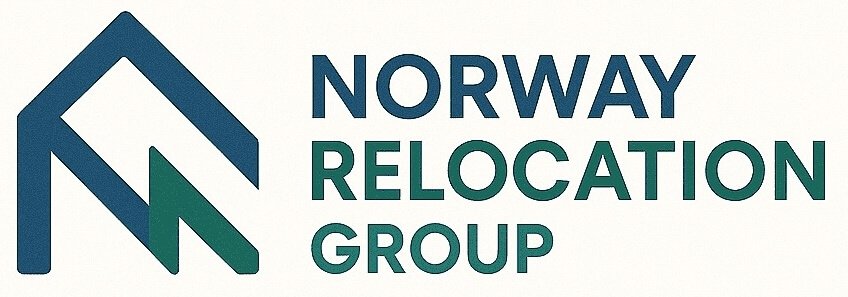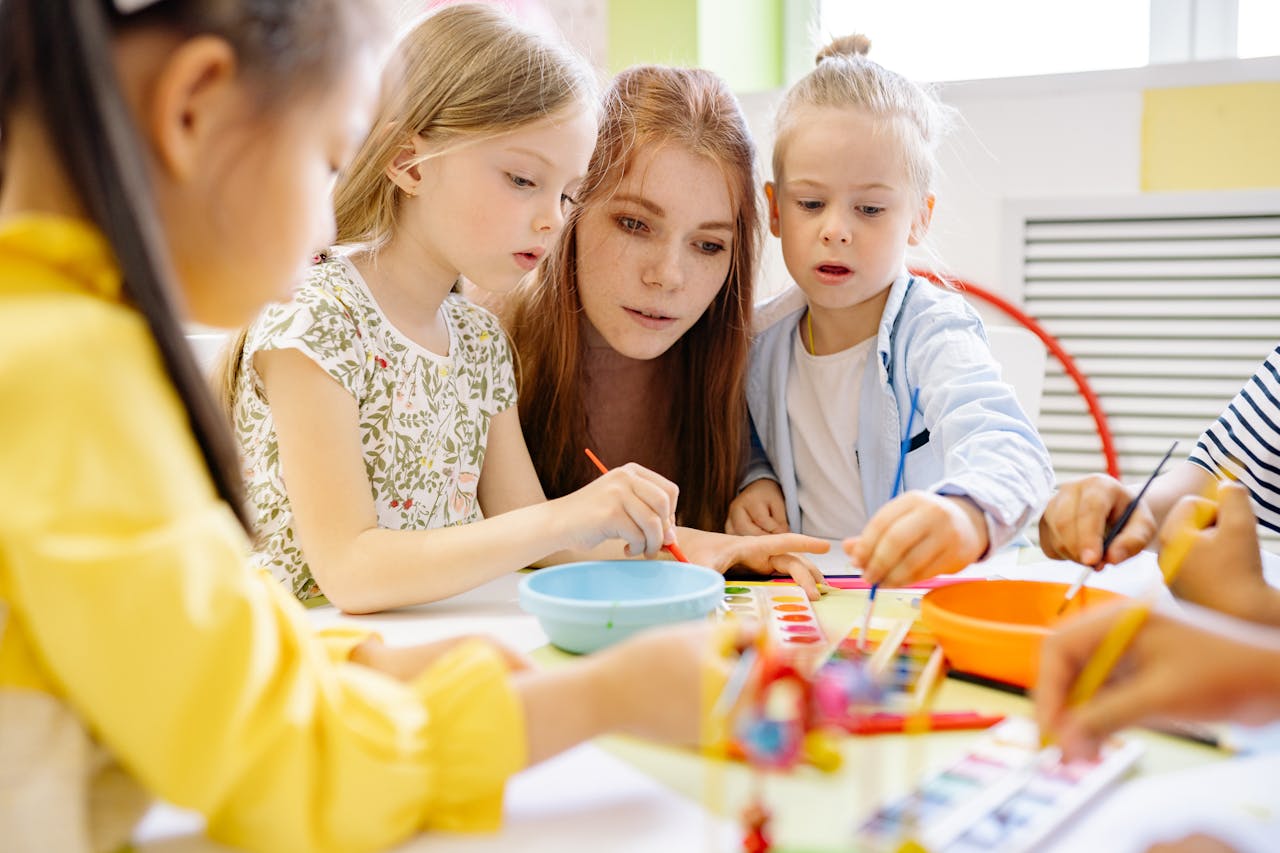For any family considering a move to Norway, one of the most pressing questions is, “What about the schools?” The well-being and education of your children are paramount, and understanding the local system is the first step toward a smooth and successful transition. At the Norway Relocation Group, we guide families through this very process, demystifying the structures and philosophies that make the Norwegian school system unique.
This article provides a comprehensive overview of the educational journey in Norway, from the play-based learning of barnehage to the specialized pathways of videregående. The system is built on a foundation of powerful core principles: equality, inclusivity, and a deep connection to nature. It aims not just to educate, but to nurture well-rounded, socially responsible, and resilient individuals.
The Core Principles of Norwegian Education
Before diving into the different stages, it’s essential to understand the philosophy that underpins the entire system. This is a system that may look quite different from what you’re used to.
- Equality (Likhet): The principle of equal opportunity is the bedrock of Norwegian education. The public school system is free for all children, from age 6 to 19, regardless of social background, ethnicity, or location. The goal is to provide every child with the same high-quality education, which is why there is not a widespread culture of private schooling as seen in many other countries. Resources are distributed to ensure that schools in all municipalities, rich or poor, can meet national standards.
- Inclusivity (Inkludering): The Norwegian system is fundamentally inclusive. The default approach is to integrate children with special needs or learning challenges into mainstream classrooms whenever possible. Specialized support is provided within the school environment by the Pedagogical-Psychological Service (PPT), which works with schools, parents, and students to create individualized learning plans. This fosters an environment of understanding and acceptance among all students from a young age.
- Holistic Development and Friluftsliv (Outdoor Life): Norwegian education is about more than just academic achievement. There is a strong emphasis on developing the “whole child,” which includes social skills, emotional intelligence, creativity, and physical health. A key component of this is friluftsliv, a quintessentially Norwegian concept that translates roughly to “open-air living.” From the earliest years, children are encouraged to play and learn outdoors in all seasons. This builds resilience, a respect for nature, and promotes physical and mental well-being. Don’t be surprised to see five-year-olds cheerfully playing in the snow or rain; as the Norwegian saying goes, “There is no such thing as bad weather, only bad clothing.”
Barnehage (Kindergarten/Daycare, Ages 1-5)
The first step in the Norwegian educational journey for most children is barnehage. While not compulsory, attendance is nearly universal, with over 90% of children aged 1-5 enrolled.
- Focus on Play-Based Learning: Barnehage is not a highly academic environment. The primary focus is on learning through play, developing social skills, and spending a significant amount of time outdoors. Children learn to share, negotiate, resolve conflicts, and work together in groups. They sing, create art, listen to stories, and explore their natural surroundings. Formal instruction in reading, writing, and mathematics is minimal and is introduced gently and informally.
- The Right to a Place: All children residing in Norway have a legal right (rett til plass) to a place in a barnehage from the year they turn one. The main application deadline for the primary intake, which starts in August, is typically in early spring. Applications are managed through a coordinated municipal portal.
- Costs and Practicalities: Barnehage is not free, but the government sets a maximum price (makspris) that both public and private providers can charge, making it affordable for most families. There are also sibling discounts and income-based reductions available.
The application process and securing a spot in a preferred barnehage can sometimes be complex, especially if you are arriving outside the main application window. At the Norway Relocation Group, we frequently assist families in navigating these municipal systems. You can reach out to our team for personalized support through our contact page.
Grunnskole (Compulsory School, Ages 6-16)
At age six, every child in Norway begins grunnskole, the ten years of compulsory education. It is divided into two distinct stages.
1. Barneskole (Primary/Elementary School, Grades 1-7, Ages 6-13)
The first seven years of compulsory education are spent in barneskole. The atmosphere is designed to be safe, nurturing, and encouraging.
- Curriculum: The focus is on foundational skills: learning to read, write, and perform basic mathematics. However, the curriculum is broad and includes English (starting from Grade 1), social studies, science, art, music, and physical education.
- Low Academic Pressure: A defining feature of barneskole is the absence of formal grades or marks. Teachers provide continuous feedback through conversations, written comments, and parent-teacher meetings (foreldresamtaler). This low-pressure environment allows children to develop a love for learning without the anxiety of constant testing. Formal grades are only introduced towards the end of this stage, in Grade 6, to prepare students for the next level.
- The Contact Teacher (Kontaktlærer): Each class has a main contact teacher who is the primary point of communication for parents and is responsible for the overall academic and social well-being of the students in their class.
2. Ungdomsskole (Lower Secondary/Middle School, Grades 8-10, Ages 13-16)
The transition to ungdomsskole marks a significant shift towards a more academic focus.
- Introduction of Formal Grades: This is where students begin receiving formal grades (karakterer) on a scale from 1 (lowest) to 6 (highest). These grades are crucial, as the final grade point average from ungdomsskole determines a student’s eligibility and options for the next stage of their education.
- Broader Subject Range: The curriculum becomes more specialized. In addition to core subjects, students must choose an elective subject (valgfag) based on their interests, which can range from programming to outdoor life to drama. They also begin a second foreign language, typically German, French, or Spanish.
- National Tests (Nasjonale Prøver): During ungdomsskole, students take national tests in reading, mathematics, and English. These are not final exams but diagnostic tools used to help schools assess and improve their educational practices.
SFO (Skolefritidsordning) – Before and After-School Care
For working parents with children in barneskole (typically grades 1-4), SFO is an essential service.
- Purpose: SFO is an optional, paid care program that operates before and after school hours. It is not an extension of the academic day. The focus is on supervised free play, social activities, sports, and arts and crafts. Children are also often given time and a quiet space to do their homework.
- Practicalities: SFO is usually located at the school itself, making logistics easy for parents. You apply for a place through the municipality, and costs vary, though recent government initiatives have made it free for the first and second grades.
Videregående Skole (Upper Secondary School, Ages 16-19)
After completing grunnskole, students have the right to three years of upper secondary education. While not compulsory, the vast majority of Norwegians attend. This is where the educational path splits into two main streams, based on a student’s interests and career aspirations.
1. Studieforberedende (University-Preparatory Programs)
This pathway is designed for students who intend to pursue higher education at a university or college.
- Goal: The primary goal is to achieve generell studiekompetanse, the general university admissions certification required for bachelor’s degree programs.
- Tracks: While there is a general academic track (studiespesialisering), there are also more specialized preparatory programs that combine academics with a focus on areas like sports (idrettsfag), or music, dance, and drama (musikk, dans og drama). These programs still lead to university admission but allow students to cultivate a specific talent.
2. Yrkesfaglig (Vocational Programs)
This pathway is for students who want to enter a specific trade or profession.
- Structure: Vocational programs are highly practical and job-oriented. The typical structure is two years of school-based learning followed by two years of apprenticeship (lærling) with a certified company.
- Outcomes: Successful completion of the apprenticeship leads to a trade certificate (fagbrev), which qualifies the holder as a skilled worker in fields like carpentry, plumbing, electrical work, healthcare, IT support, or culinary arts.
- A Flexible System: Crucially, choosing a vocational path is not a dead end for higher education. This is a key strength of the Norwegian system. After completing their vocational training, students can take an additional year of study called påbygging. This “bridging year” grants them the same generell studiekompetanse as the academic track, giving them the option to apply to university later on. This flexibility ensures that all paths remain open.
Special Considerations for Expat Families
- Language Support: The Norwegian government is committed to helping non-native speakers integrate. Students who do not have sufficient Norwegian language skills to follow mainstream teaching are entitled to special language education (særskilt norskopplæring), either in small groups or through support within the regular classroom.
- International Schools: For families who are in Norway for a shorter period or who wish for their children to continue with a specific curriculum (like the International Baccalaureate – IB), there are private international schools. These schools teach primarily in English and can offer a more familiar environment. However, they come with significant tuition fees and can sometimes make it harder for children and families to integrate into the local Norwegian community. Choosing between a local Norwegian school and an international school is a major decision with long-term implications. Our consultants can talk you through the pros and cons for your specific family situation. Find our contact information at https://norwayrelocation.no/contact/.
- Parental Involvement (Foreldresamarbeid): Norwegian schools expect a high level of parental involvement. This includes attending parent-teacher meetings, school events, and participating in dugnad—a wonderful tradition of communal volunteer work where parents come together to help with tasks like painting, gardening, or organizing school fairs.
Conclusion: A System Built for the Child
The Norwegian school system is a reflection of the country’s core values: it is egalitarian, inclusive, and deeply connected to the outdoors. It prioritizes the overall well-being of the child—barnets beste (the child’s best interests)—above all else. The focus on collaboration over competition, holistic development over rote memorization, and trust over pressure, creates a safe and nurturing environment where children can thrive.
We understand that absorbing all this information can be overwhelming. The structure, the language, and the philosophy may be new, but it is a system that consistently ranks among the best in the world for student well-being. With the right support and information, your family’s educational journey in Norway can be an incredibly positive and enriching experience.
If you have questions or need assistance with school applications, understanding your local options, or any other aspect of your move, please do not hesitate to get in touch. Let our team at the Norway Relocation Group be your guide. You can connect with us directly via our contact page: https://norwayrelocation.no/contact/.

